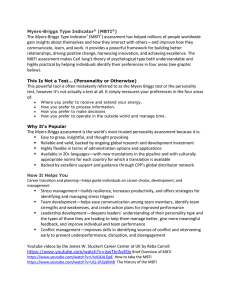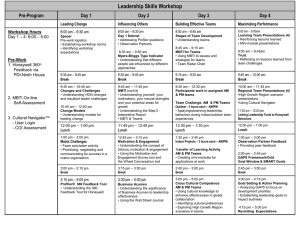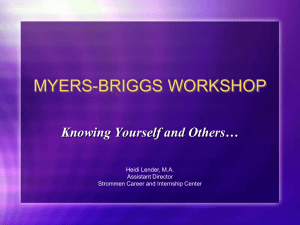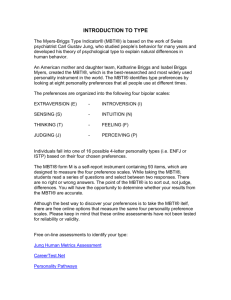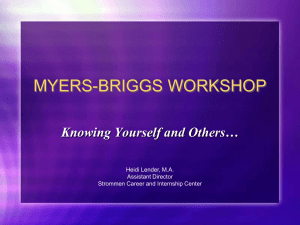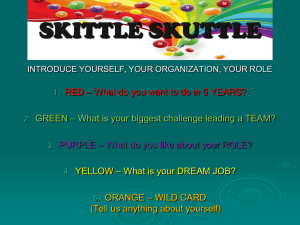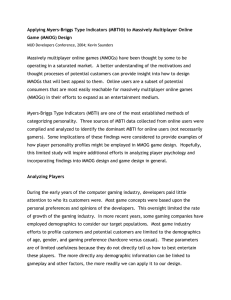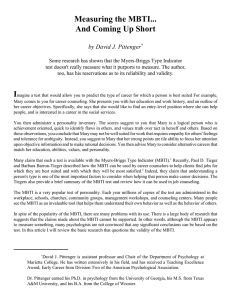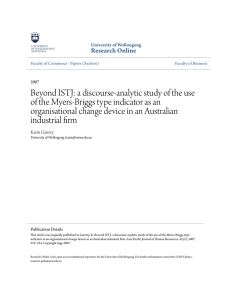M-B Profile and Work Behavior
advertisement
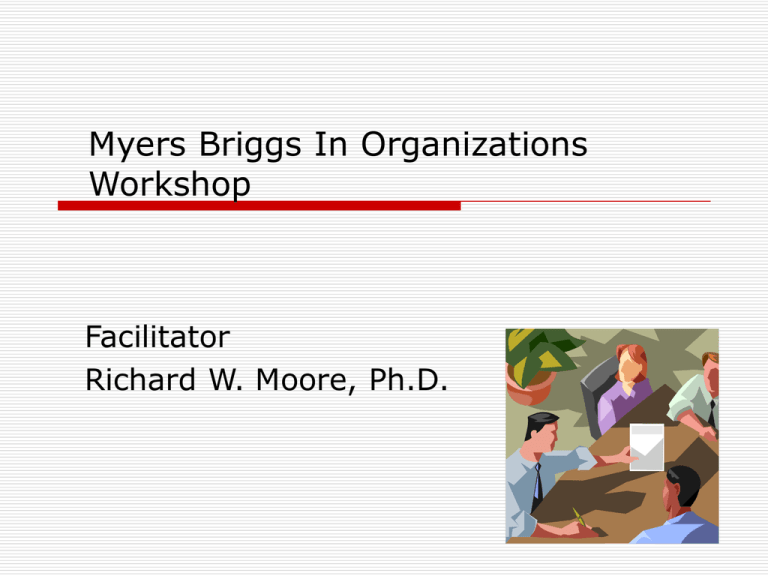
Myers Briggs In Organizations Workshop Facilitator Richard W. Moore, Ph.D. Directions Complete and score instrument Think about your behavior at work when responding Objectives Understand your personal preferences and how they affect your Managerial style. Examine how MBTI effects teamwork. Understand the importance of individual differences in organizations. Value of the MBTI Better understand your own and others behavior at work. Develop a language for talking about individual differences in an objective manner. Understand how individual’s different ways of approaching a problem can improve team performance. Predict strengths and blinds spots for teams. Understanding the MBTI Reflects back what you say about your self in a systematic way. Profiles what you prefer to do, not what you can do. Letters represent ends of one scale, your actual score is somewhere along the scale. All participation is voluntary. Rick is available for follow-up discussion. Myers-Briggs Type Indicators (MBTI) 1st Letter Energizing: Orientation of your energy either: Extroversion: towards the outside world, people activities and things Introversion: toward the world inside you, emotions and impressions. Myers-Briggs Type Indicators (MBTI) 2nd Letter Attending: what a person pays attention to, either: Sensing: noticing what is actual, taking in information through the five sense, focus on specifics first. INtuition: noticing what might be, take in information through a 6th sense, focus on the overall pattern first. Myers-Briggs Type Indicators (MBTI) 3rd Letter Deciding: how a person makes decisions, either Thinking: preference for structuring information to decide in a logical objective way Feeling: preference for structuring information to decide in a personal, values orientated way. Myers-Briggs Type Indicators (MBTI) 4th Letter Living: orientation to the outside world, how you deal with life: either Judging: preferring a planned organized life Perceiving: preferring a spontaneous, flexible life Discussion Point On page 9 and 10 examine the “preferences” that go with your profiles. Discuss with your group: Do you prefer these behaviors at work? Do you recognize people around you have the opposite preference? Have your preference affected you interactions with others? Discussion Point: Quadrants On page 34 find your leading/following style. Discuss: Does this description fit you? How has your type affected your interactions at work? With subordinates? With Peers? Give specific examples. Report in to larger group Discussion Point: Four Temperaments Find and review your temperament on page 34. Discuss how these preferences influence your behavior at work: Discussion Point 5: Your Type Find full description of your type in pages 14-29. Review the description and see if it fits you. Review “Potential Areas for Growth” What are your blind spots? Where can you develop? M-B Profile and Groups Homogeneous Groups Start fast. Reach agreement easily. People feel comfortable. Generate fewer creative solutions. Tend to have collective blind spots. Heterogeneous Groups Start Slow. Have more conflict and have difficulty. reaching agreement People feel less comfortable. Generate more creative solutions. Catch errors and over sights. Map # Team members in Each Quadrant IS Thoughtful Realist IN Thoughtful Innovator ES Action Oriented Realist EN Action Oriented Innovator Map # of Team Members in Each Temperament SJ Guardians SP Artisans NF Idealists NT Rationalists Based on your profiles answer these questions How heterogeneous of homogeneous is your team? How would you describe you team’s workstyle(s)? What are your team’s strengths? What types of tasks will your team be best at? What types of tasks will be most problematic? What leadership style works with your team? What are your collective blind spots?
